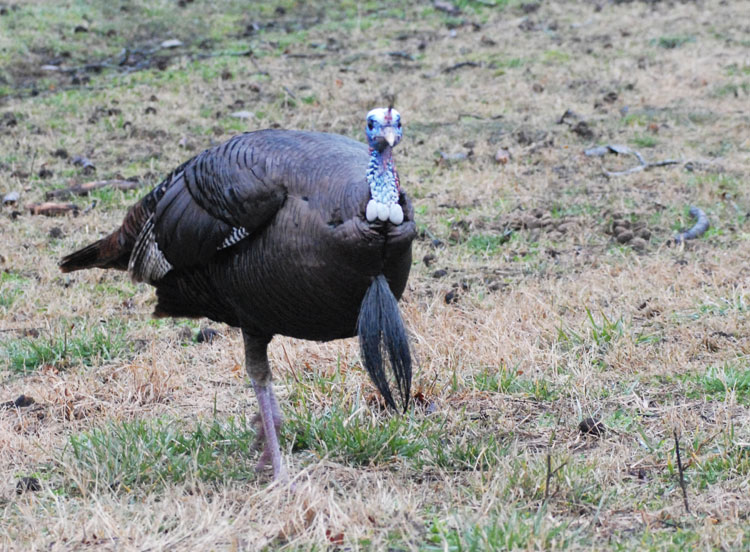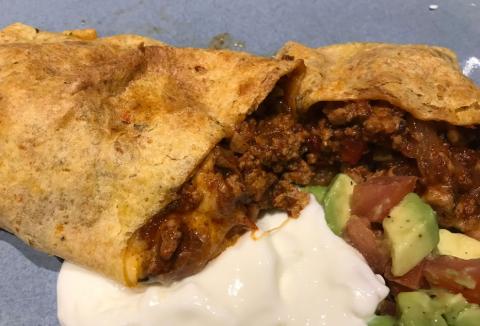Matt Van Cise from Brookville, Pennsylvania, is known as one of the nation’s leading turkey callers, and his resume proves it. He's been hunting turkeys for 27 years, and he's been competing in turkey calling contests for 23 years. He's won seven World Open Championships, five Senior Grand Nationals, two Grand National Friction Calling Championships, a World Friction Championship, three U.S. Opens, the Mid-American Open and the North American Open. If you include all the smaller calling contests, he's probably won over 100. A Mossy Oak ProStaffer since 2011, Van Cise’s two favorite Mossy Oak patterns for turkey hunting are Mossy Oak Obsession and Bottomland. He recently won the 2018 National Wild Turkey Federation (NWTF) Grand National Friction Calling Contest.
Matt Van Cise | Mossy Oak ProStaff

The best advice I can give anyone about calling turkeys is that there's not an instruction book on what calls or types of calling will make every turkey come within gun range. A few years back I was hunting with a friend of mine. We were on a ridge top on the edge of a field hunting a gobbler that I had hunted two or three times before. I just couldn’t seem to bag that gobbler.
On that particular day, this tom was gobbling to a lot to calls. He’d come to a certain point in the field just out of gun range, and he’d stand in that one spot and gobble. But he wouldn’t come any closer to us. We tried backing away from the turkey and not calling to him, and the turkey backed away from us. For about two hours, we tried everything I knew to attempt to get that turkey within gun range, and he wouldn’t come. I had already tried several calls to bring the bird to us, and none of them produced. Finally, I pulled out a diaphragm call that sounded almost like a jake call. I called to that turkey nonstop 20 or 30 times with almost no break between the series of calls that I used. Finally, that turkey moved toward us.
Most turkey hunters would not believe that using a high-pitched, jake-sounding diaphragm call would have convinced that gobbler to come within gun range. But on that day and at that time, that’s exactly what we did. We had a successful hunt and took that gobbler home with us. That bird really wanted to hear a different call. That’s what it took to convince that bird to come to us. I threw every type of calling sequence that I knew, and I used every call in my turkey vest, and nothing would work. Finally when I pulled that old honking-type diaphragm call out, the turkey would gobble every time he heard it.
Through a month-long turkey season in the spring, you’ll have a number of really windy days without rain. On those kinds of days, I prefer a friction call that will reach out a long ways. In my opinion, a friction call cuts through the wind better than any other call. If you're attuned to hearing a turkey gobbler, even on a windy day, you can hear a turkey gobble from a long way.
On those kinds of days, when the wind is really howling, I’ll probably use an aluminum surface pot call. With an aluminum pot call, you still can make very soft calls when the turkey comes in close. But on those windy days, that piercing sound of aluminum will knife through the wind, so that a gobbler can hear you even at a long distance.
Another off-the-wall tactic that breaks all the rules was a strategy I used when I was hunting Rio Grande gobblers in California with the National Wild Turkey Foundation (NWTF). We had hunted these turkeys pretty hard. We were almost at the end of the California turkey season, and the temp was 95 degrees. The gobblers had just about quit gobbling. But on this particular morning before daylight, we had turkeys gobbling all around us for some strange reason, but the gobblers were across the canyon from the mountain where we were hunting.
I had watched a Denny Gulvas video that was made back in the 1980s, and I decided to try some of his techniques on this hunt. He called the tactic, “pick a spot calling.” Although we really called a lot to these turkeys, and they would gobble a lot, they'd come to a certain spot out of gun range and wouldn’t move any closer.
We were filming this hunt, so I told my cameraman, “You stay right here.”
Then I went out about 50 yards in front of our stand, stayed behind a tree and called as much and as loudly as I'd ever called. Then I quit calling and crawled back to the spot where my cameraman was, and I didn’t call again.
I told the cameraman, “If this tactic works, that gobbler is going to show up right behind that tree.”
That turkey started gobbling, and he came and stood about 10 yards behind the tree from where I’d been calling. At 40 yards, he was in range of my 3-1/2 inch Benelli shotgun, and I was able to harvest him on camera.
Sometimes knowing when to shut up and let the turkey come looking for you works, but that’s not a tactic I use regularly. And when nothing else will bring a turkey in to gun range, oftentimes, you can get him excited by giving him a lot of aggressive mating calls. Then go silent, and make him wonder what’s happened to you. Often, he’ll come looking for you. With that tactic, you're betting on the turkey’s curiosity to take over, and his ego to cause him to go to a place he normally won’t go to find out why that hen hasn’t come to him when he’s gobbled.
To see and learn more about the custom calls that Van Cise is making, go to his Facebook page at High Class Calls by Matt Van Cise, or you can go to his personal Facebook page Matt Van Cise.




























